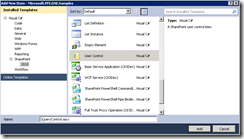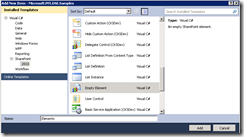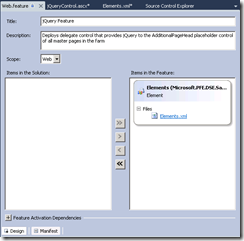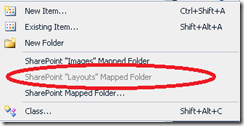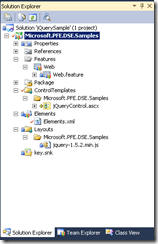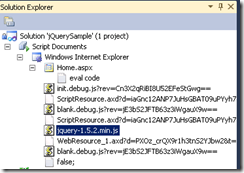Adding jQuery to Every Page in SharePoint with Delegate Controls
A customer asked how they could add jQuery to every page in SharePoint. They wanted to modify core.js on the disk, but of course we all know that Microsoft does not support modifying files that reside in the _layouts folder. Of course there are supported ways to do this without such hacks.
All of the out-of-box SharePoint master pages (v4.master, default.master, minimal.master, and nightandday.master) include the following in the HEAD section of the HTML markup:
<SharePoint:DelegateControl runat="server"
ControlId="AdditionalPageHead"
AllowMultipleControls="true"/>
Chris O’Brien has a great write-up of Using the Delegate Control. The DelegateControl provides a plugin framework for SharePoint, telling ASP.NET to find any registered delegate controls, and for each call the LoadControl method to load your control. It’s a very slick way to add controls to pages without modifying the master page.
The solution for us is to deploy the jQuery script to SharePoint, and then deploy a delegate control that references that script location.
Create the Control
This is one of those things that I think every SharePoint developer should become instantly familiar with. You can add your own user controls to SharePoint and reference them from your pages just like you can with ASP.NET. In Visual Studio 2010, create a new empty SharePoint project called “Microsoft.PFE.DSE.Samples” and make it a farm solution.
Note: We could deploy a delegate control using the sandbox as well. I chose to use a farm solution because I am deploying the jQuery library to the SharePoint root (aka 14 hive), which you cannot do with sandboxed solutions.
In Visual Studio, click “Add New Item” and add a new User Control called jQueryControl.ascx.
In the source view for the control, add the following line of code:
<script type="text/javascript"
src="/_layouts/Microsoft.PFE.DSE.Samples/jquery-1.5.2.min.js" />
The result looks like this:
That’s how easy it is to create a control and deploy it to SharePoint. You can now use your control in your pages in SharePoint. Now, let’s see how to register it as a delegate control.
Adding the Feature
The next step is to add a feature to the project that tells SharePoint about our control. In Visual Studio, add a new “Empty Element” to your project named “elements”.
Change the resulting Elements.xml to the following:
<?xml version="1.0" encoding="utf-8"?>
<Elements xmlns="https://schemas.microsoft.com/sharepoint/">
<Control Id="AdditionalPageHead"
Sequence="90"
ControlSrc="~/_CONTROLTEMPLATES/Microsoft.PFE.DSE.Samples/jQueryControl.ascx" />
</Elements>
Now that the feature element is created, we need to edit the feature that deploys it. Open the feature in the SharePoint project and change the scope to “Web”. Give it a title and description as well.
By deploying your feature with web scope, every page in the web where the feature is activated will include the jQuery script, including pages in the layouts directory (remember that they use master pages with AdditionalPageHead, too). If you change the scope to “Site”, every page in your site collection will include the script, changing to WebApplication means every page in your application gets it, and Farm means every single page in the farm gets it.
Deploying the jQuery Script File to Layouts
The last part of the puzzle is to deploy the jQuery script file to the layouts directory. Right-click your project and add a SharePoint “Layouts” Mapped Folder.
In the resulting folder, add the jQuery javascript file. The results look like this:
The Results
Hit F5 in Visual Studio 2010 to deploy the solution and start debugging. The debugger will automatically attach to the page, and you will see the script loaded in the debugger, without having to modify the master page, the page you are viewing, and certainly you won’t be modifying core.js to make it happen!
The source for the project is attached.
